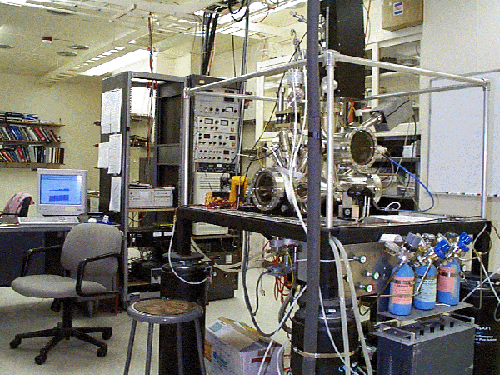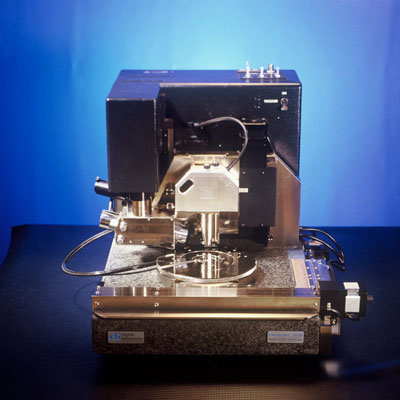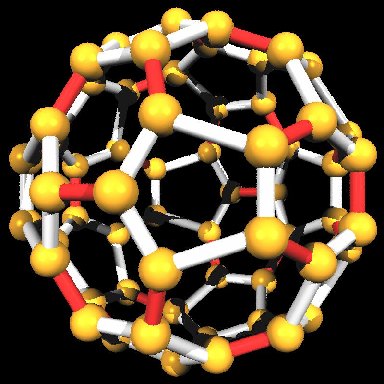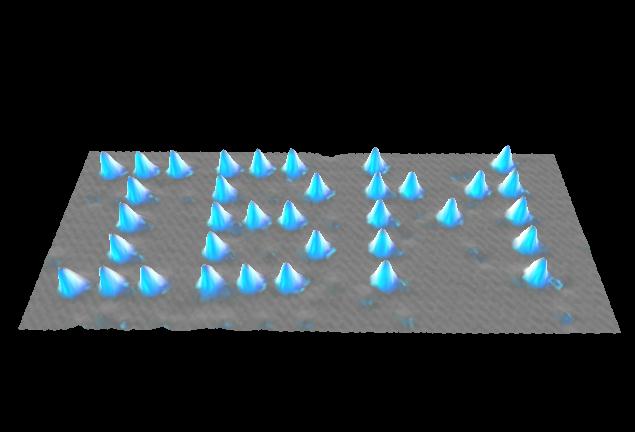| << Chapter < Page | Chapter >> Page > |
In addition to the criticism of Drexler's vision of molecular manufacturing, three important developments thatwere independent of Drexler's paper helped turn nanotechnology into this broad field, today. First, the scanning tunneling microscope(STM) was invented by Binnig and Rohrer in 1981 ( [link] ). With this technology, individual atoms could be clearly identified for the first time. Despite its limitations (only conducting materials),this breakthrough was essential for the development of the field of nanotechnology because what had been previously concepts were nowwithin view and testable. Some of these limitations in microscopy were eliminated through the 1986 invention of the atomic force microscope (AFM) ( [link] ). Using contact to create an image, this microscope could image non-conducting materials such as organic molecules. This invention wasintegral for the study of carbon Buckyball ( [link] ), discovered at Rice University. Ultimately, with these two achievements, nanotechnology could develop through the scientific method rather than through the conceptual andthus untestable visions of Drexler.



This overall trend created by advancements in microscopy is illustrated through Don Eigler's revolutionary"stunt" at IBM. Here, he manipulated individual Xenon atoms on a Nickel surface to form the letters "IBM" ( [link] ). With the microscopy technology that was invented in the early to mid eighties, Eigler and his research team advanced the field ofnanotechnology by seeking to simply manipulate atoms. Thus, while Drexler was conceiving sensationalized possibilities of "universalassemblers," Eigler focused his nanotech research on the realistic and attainable level that Smalley presented in his argument withDrexler. From this "stunt," nanotech research followed Eigler's path and therefore strayed away from Drexler's original vision. Becausenanotechnology was viewed at this level, the field soon encompassed both practical manufacturing and non-manufacturing activities asDrexler's ideas were put aside.

While nanotechnology came into existence through Feynman's and then Drexler's vision of molecularmanufacturing, the field has evolved in the 21st century to largely include research in chemistry and materials science as well asmolecular engineering. As evidenced by Smalley's debate, this evolution is partly a response to the criticism of Drexler's views inboth Engines of Creation and the Foresight Institute. Thus, in regards to the development of nanotechnology inthe present, Drexler's vision can be viewed as an indirect influence through the sheer interest and subsequent criticism that he created inthe field. As Toumey argues, Drexler and therefore Feynman did not have a direct role in the three most important breakthroughs innanotechnology, the invention of the STM, the invention of the AFM, and the first manipulation of atoms. Instead, Drexler, throughMolecular Manufacturing and Engines of Creation, brought scientists from all over the world to the brand new field. Consequently,criticism for Drexler's vision was established by researchers such as Dr. Smalley. Through this reevaluation and the parallel breakthroughsin microscope technology, nanotechnology as a scientific field was established in a way that diverged from Drexler's original vision ofmolecular manufacturing. This divergence is illustrated through the contrasting goals of the government's National NanotechnologyInitiative and Drexler's Foresight Institute. As a result, a thorough grasp of this early history isintegral to understanding the development and definition of both the realities and potential of nanotechnology, today. Whereas Drexlercreated interest in the field but also sensationally outlined a nanotech revolution, researchers around the world have brought thenanotechnology that Drexler first envisioned to a more realistic and attainable level. All in all, today, the goal for nanotech research isnot to immediately create billions of assemblers that will revolutionize our world but rather to explore the manufacturing andnon-manufacturing aspects of nanotechnology, through a combination of chemistry, materials science, and molecular engineering.17Thoughplaces such as Drexler's Foresight Institute remain, academic institutions such as Rice University stay away from Drexler'ssensationalized vision of nanotechnology as molecular manufacturing. This divergence is epitomized by the contrasting goalsof the U.S government's National Nanotechnology Initiative and the Foresight Institute.

Notification Switch
Would you like to follow the 'Nanomaterials and nanotechnology' conversation and receive update notifications?